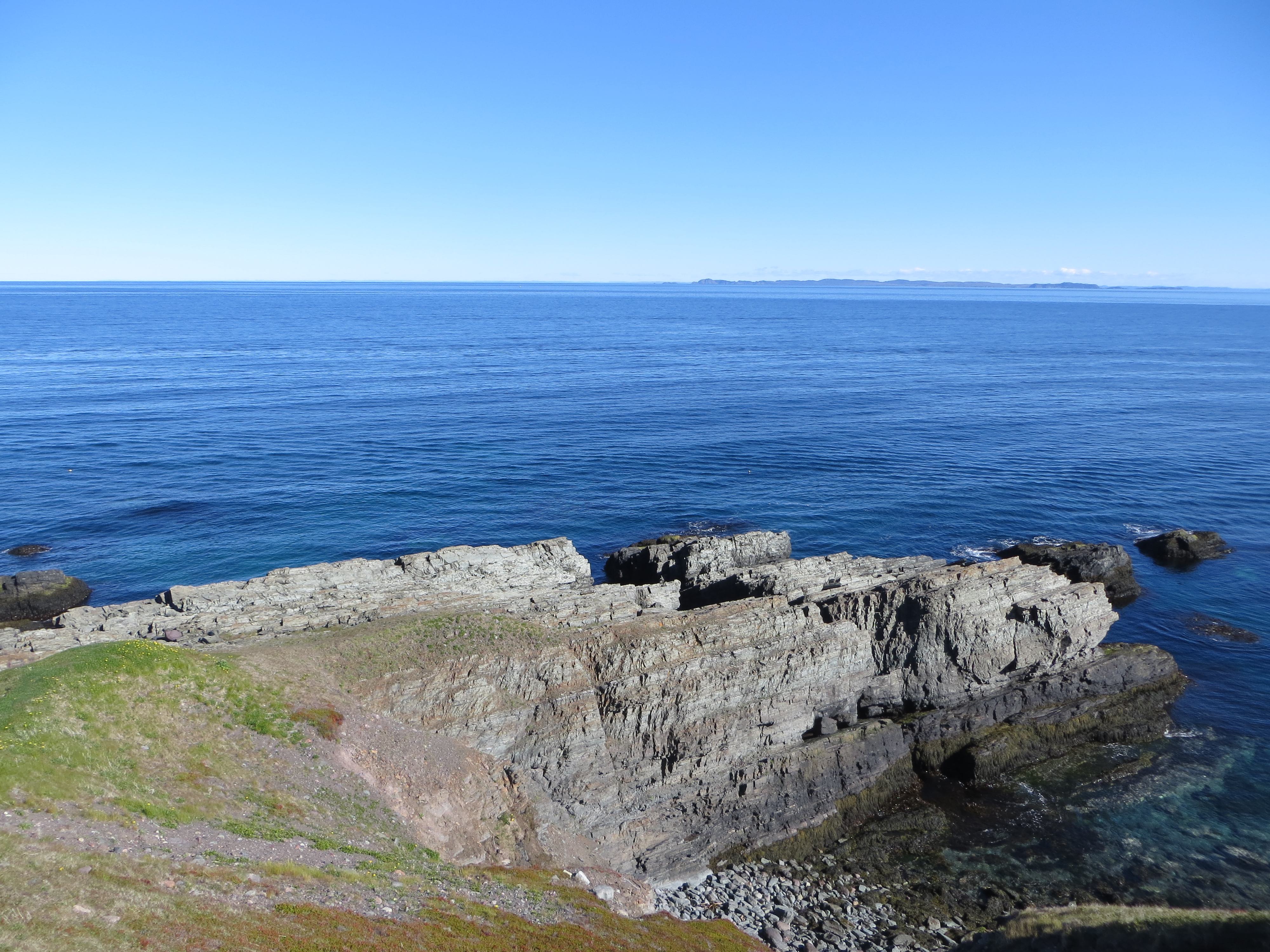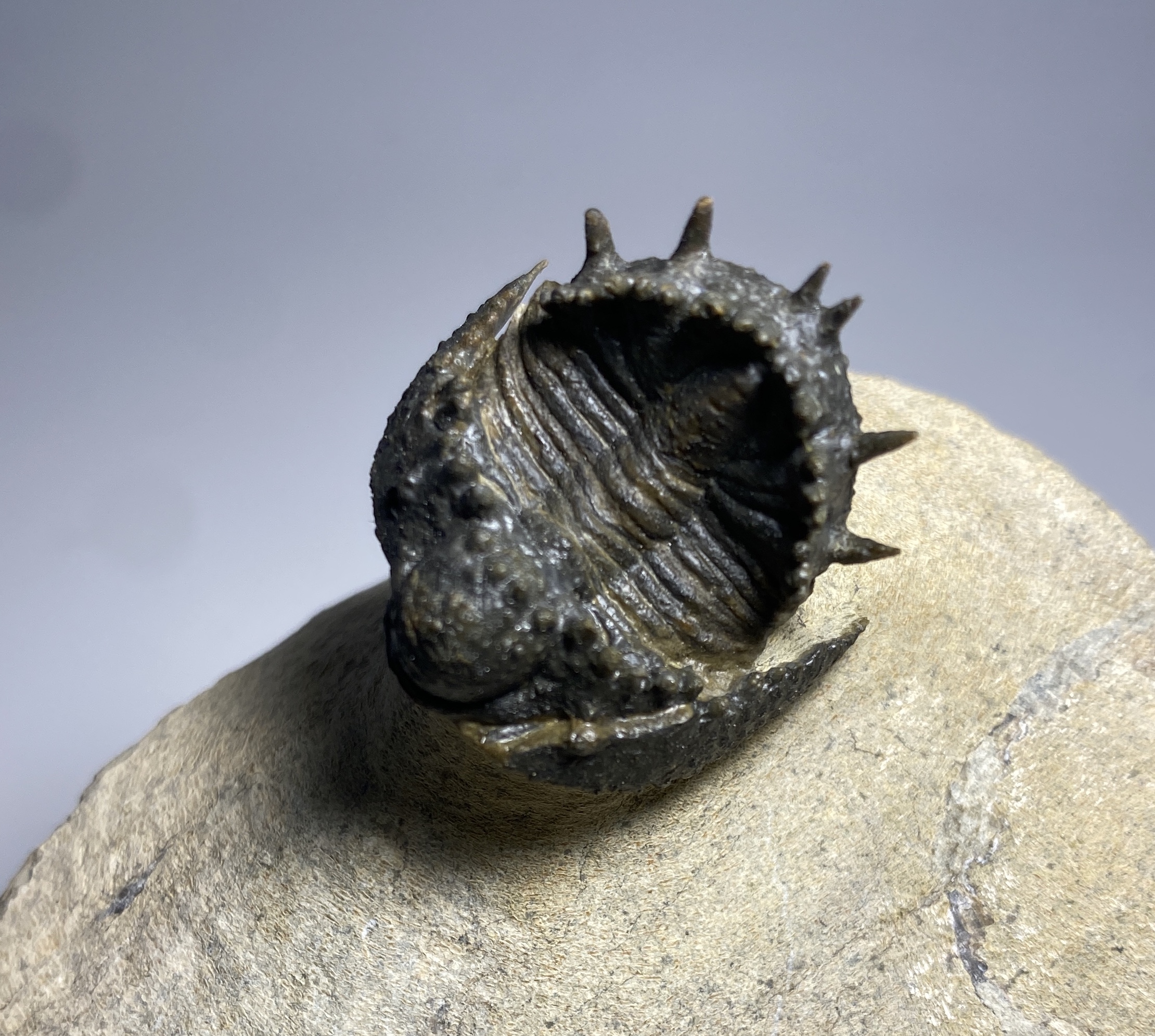|
Trilobite
Trilobites (; meaning "three-lobed entities") are extinction, extinct marine arthropods that form the class (biology), class Trilobita. One of the earliest groups of arthropods to appear in the fossil record, trilobites were among the most successful of all early animals, existing in oceans for almost 270million years, with over 22,000 species having been described. Because trilobites had wide diversity and an easily fossilized mineralised exoskeleton made of calcite, they left an extensive fossil record. The study of their fossils has facilitated important contributions to biostratigraphy, paleontology, evolution, evolutionary biology, and plate tectonics. Trilobites are placed within the clade Artiopoda, which includes many organisms that are morphologically similar to trilobites, but are largely unmineralised. The relationship of Artiopoda to other arthropods is uncertain. Trilobites evolved into many ecological niches; some moved over the seabed as predators, scavengers, or ... [...More Info...] [...Related Items...] OR: [Wikipedia] [Google] [Baidu] |
Isotelus
is an extinct genus of large Asaphida, asaphid trilobites from the Middle and Late Ordovician Period, fairly common in the northeastern United States, northwest Manitoba, southwestern Quebec and southeastern Ontario. Isotelus is the state fossil of Ohio, and through multiple specimens from the 1800s into the modern day has held the title of largest trilobite fossil in the world, reaching over long. Isotelus was carnivorous and a burrower which lived in warm shallow seas, feeding on worms and other soft-bodied animals on and below the substrate. As larvae, Isotelus was planktonic, drifting in the water column with a morphology very different from the adult. Their distinctive morphology with a large shovel-like head, prominent eyes, long genal spines, and their enormous size, makes ''Isotelus'' one of the most sought after trilobites in North America. History By published accounts, fossils of ''Isotelus'' were first discovered by John Sherman at Trenton Falls, within the rocks ... [...More Info...] [...Related Items...] OR: [Wikipedia] [Google] [Baidu] |
Cambrian
The Cambrian ( ) is the first geological period of the Paleozoic Era, and the Phanerozoic Eon. The Cambrian lasted 51.95 million years from the end of the preceding Ediacaran period 538.8 Ma (million years ago) to the beginning of the Ordovician Period 486.85 Ma. Most of the continents lay in the southern hemisphere surrounded by the vast Panthalassa Ocean. The assembly of Gondwana during the Ediacaran and early Cambrian led to the development of new convergent plate boundaries and continental-margin arc magmatism along its margins that helped drive up global temperatures. Laurentia lay across the equator, separated from Gondwana by the opening Iapetus Ocean. The Cambrian marked a profound change in life on Earth; prior to the Period, the majority of living organisms were small, unicellular and poorly preserved. Complex, multicellular organisms gradually became more common during the Ediacaran, but it was not until the Cambrian that fossil diversity seems to rapidly ... [...More Info...] [...Related Items...] OR: [Wikipedia] [Google] [Baidu] |
Proetida
Proetida is an order of trilobite that lived from the Ordovician to the Permian. It was the last surviving order of trilobite, dying out in the Permian-Triassic extinction event. Description These typically small trilobites resemble those of the order Ptychopariida, from which the new order Proetida was separated in 1975 by Richard Fortey, Fortey and Owens. Like the order Phacopida, the proetids have exoskeletons that sometime have pits or small tubercles, especially on the glabella (trilobite anatomy), glabella (middle portion of the head). Because of their resemblance to the Ptychopariida in some features, the proetids are included in the subclass Librostoma. Unlike the trilobites of the phacopid suborder Phacopina, whose trilobite eye, eyes are Eye#Apposition eyes, schizochroal, the proetids have the more common holochroal eyes. These eyes are characterized by close packing of biconvex Lens (anatomy), lenses beneath a single corneal layer that covers all of the lenses. Each ... [...More Info...] [...Related Items...] OR: [Wikipedia] [Google] [Baidu] |
Lichida
Lichida is an order of typically spiny trilobite that lived from the Furongian to the Devonian period. These trilobites usually have 8–13 thoracic segments. Their exoskeletons often have a grainy texture or have wart or spine-like tubercles. Some species are extraordinarily spiny, having spiny thoracic segments that are as long or longer than the entire body, from cephalon (head) to pygidium (tail). The sections of the pygidia are leaf-like in shape and also typically end in spines. The order is divided into two families, Lichidae, and Lichakephalidae. Some experts group the families of the closely related order Odontopleurida within Lichida, too, whereupon the family is then divided into three superfamilies, Dameselloidea, containing the family Damesellidae, Lichoidea, containing the families Lichidae and Lichakephalidae, and Odontopleuroidea, containing the family Odontopleuridae. Lichids are some of the largest trilobites, with the second and third largest trilobites ... [...More Info...] [...Related Items...] OR: [Wikipedia] [Google] [Baidu] |
Corynexochida
Corynexochida is an order of trilobite that lived from the Lower Cambrian to the Late Devonian. Like many of the other trilobite orders, Corynexochida contains many species with widespread characteristics. Description The middle region of the cephalon (arthropod anatomy), cephalon (the glabella) is typically elongate, with the sides often spreading forward (pestle-shaped). Some species have glabellae that are ''effaced'', meaning they are smooth and show little detail. The glabellar furrows (when not effaced) typically have a splayed arrangement. In most species, the hind pair on either side of the cephalon become spines that point sharply backwards, and the spinose tips of the anterior pairs of thoracic segments tend to become more and more forward directed toward the pygidium. The eyes are typically large. Pygidia are typically large, competing in size with the cephalon in some species. The tips of the thoracic segments of many Corynexochida species are spine-like (though in ... [...More Info...] [...Related Items...] OR: [Wikipedia] [Google] [Baidu] |
Phacops
''Phacops'' is a genus of trilobites in the order Phacopida, family Phacopidae, that lived in Europe, northwestern Africa, North and South America and China from the Late Ordovician until the very end of the Devonian, with a broader time range described from the Late Ordovician.''Phacops'' at .org It was a rounded animal, with a globose head and large eyes, and probably fed on . ''Phacops'' is often found rolled up (" volvation"), a biological defense mechanism th ... [...More Info...] [...Related Items...] OR: [Wikipedia] [Google] [Baidu] |
Agnostida
Agnostida are an order of extinct arthropods which have classically been seen as a group of highly modified trilobites, though some recent research has doubted this placement. Regardless, they appear to be close relatives as part of the Artiopoda. They are present in the Lower Cambrian fossil record along with trilobites from the Redlichiida, Corynexochida, and Ptychopariida orders, and were highly diverse throughout the Cambrian. Agnostidan diversity severely declined during the Cambrian-Ordovician transition, and the last agnostidans went extinct in the Late Ordovician. Systematics The Agnostida are divided into two suborders — Agnostina and Eodiscina — which are then subdivided into a number of families. As a group, agnostids are isopygous, meaning their pygidium is similar in size and shape to their cephalon. Most agnostid species were eyeless. The systematic position of the order Agnostida within the class Trilobita remains uncertain, and there has been c ... [...More Info...] [...Related Items...] OR: [Wikipedia] [Google] [Baidu] |
Harpetida
Harpetida is one of the eleven orders of the extinct arthropod class Trilobita. The first harpetid trilobites appear in the Upper Cambrian, and the last species die out in the late Devonian period. Harpetid trilobites are characterized among trilobites by bearing a comparatively large, semicircular brim around the cephalon (head) which is often perforated by small pores. This brim is thought to serve as a filter-feeding apparatus. The brim stretches backward on either side of the cephalon (head) and typically has a pronounced suture along the outside. The compound eyes are typically reduced to small tubercles, though they have strong ridges stretching to the glabella (central region of the cephalon). They also typically have 12 or more thoracic segments. The pygidia are usually small. The families of Harpetida were formerly included in the order Ptychopariida Ptychopariida is a large, heterogeneous order of trilobite containing some of the most primitive species known. The ... [...More Info...] [...Related Items...] OR: [Wikipedia] [Google] [Baidu] |
Phacopida
Phacopida ("lens-face") is an order of trilobites that lived from the Late Cambrian to the Late Devonian. It is made up of a morphologically diverse assemblage of taxa in three related suborders. Characteristics Phacopida had 8 to 19 thoracic segments and are distinguishable by the expanded glabella, short or absent preglabellar area, and schizochroal (Phacopina) or holochroal (Cheirurina and Calymenina) eyes. Schizochroal eyes are compound eyes with up to around 700 separate lenses. Each lens has an individual cornea which extended into a rather large sclera. The development of schizochroal eyes in phacopid trilobites is an example of post-displacement paedomorphosis. The eyes of immature holochroal Cambrian trilobites were basically miniature schizochroal eyes. In Phacopida, these were retained, via delayed growth of these immature structures (post-displacement), into the adult form. '' Eldredgeops rana'' (Phacopidae) and '' Dalmanites limulurus'' (Dalmanitidae) are two ... [...More Info...] [...Related Items...] OR: [Wikipedia] [Google] [Baidu] |
Redlichiida
Redlichiida is an order of trilobites, a group of extinct marine arthropods. Species assigned to the order Redlichiida are among the first trilobites to appear in the fossil record, about halfway during the Lower Cambrian. Due to the difficulty to relate sediments in different areas, there remains some discussion, but among the earliest are '' Fallotaspis'' (suborder Olenellina), and '' Lemdadella'' (suborder Redlichiina), both belonging to this order. The first representatives of the orders Corynexochida and Ptychopariida also appear very early on and may prove to be even earlier than any redlichiid species. In terms of anatomical comparison, the earliest redlichiid species are probably ancestral to all other trilobite orders and share many primitive characters. The last redlichiid trilobites died out before the end of the Middle Cambrian. Description Most redlichiids are rather flat (or have low dorso–ventral convexity) and their exoskeleton typically has an oval ou ... [...More Info...] [...Related Items...] OR: [Wikipedia] [Google] [Baidu] |
Asaphida
Asaphida is a large, morphologically diverse order of trilobites found in marine strata dated from the Middle Cambrian until their extinction during the Silurian. Asaphida contains six superfamilies (Anomocaroidea, Asaphoidea, Cyclopygoidea, Dikelocephaloidea, Remopleuridoidea and Trinucleioidea), but no suborders. Asaphids comprise some 20% of described fossil trilobites. In 2020, the superfamily Trinucleioidea was proposed to be raised to an order ( Trinucleida) and removed from Asaphida. Morphology The Asaphids generally have cephalon (head) and pygidium (tail) parts similar in size, and most species have a prominent median ventral suture. Heads are often flat, and carapace furrows in the head area are often faint or not visible. Thoracic segments typically number 5 - 12, though some species have as few as two and some as many as 30. They also generally have a wide doublure, or rim, that surrounds the cephalon. This causes some specimens to be described as having a chara ... [...More Info...] [...Related Items...] OR: [Wikipedia] [Google] [Baidu] |
Walliserops
''Walliserops'' (named after Prof. O. Walliser of the University of Göttingen) is a genus of spinose phacopid trilobite, of the family Acastidae, found in Lower to Middle Devonian age rocks from the Anti-Atlas Mountains of Morocco. All species of ''Walliserops'' possess a three-pronged "trident" that protrudes from the glabella. ''Walliserops'' is most closely related to the genus '' Comura''. Taxonomy ''Walliserops'' was originally erected for a single species, ''W. trifurcatus''. Later, two other species were assigned: ''W. hammii'' and ''W. tridens''. All three currently described species come from the same strata near Foum Zguid in southern Morocco. Three as yet undescribed species are recorded from other locations. Early reports of "trident" trilobites and placement within the proposed new genus "''Parabolops''" ("parabola face")—long tridents being placed within "''P. neptunis''", short tridents placed within "''P. hammi''"—were pre-empt ... [...More Info...] [...Related Items...] OR: [Wikipedia] [Google] [Baidu] |




